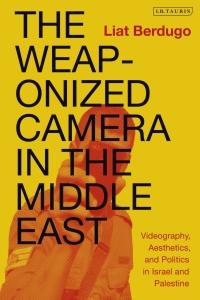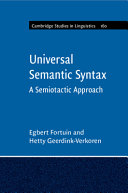Buy The Weaponized Camera in the Middle East: Videography, Aesthetics, and Politics in Israel and Palestine
1st Edition PDF ebook by author Liat Berdugo – published by I.B. Tauris & Co Ltd in 2021 and save up to 80% compared to the print version of this textbook. With PDF version of this textbook, not only save you money, you can also highlight, add text, underline add post-it notes, bookmarks to pages, instantly search for the major terms or chapter titles, etc.
You can search our site for other versions of the The Weaponized Camera in the Middle East: Videography, Aesthetics, and Politics in Israel and Palestine
1st Edition PDF ebook. You can also search for others PDF ebooks from publisher I.B. Tauris & Co Ltd, as well as from your favorite authors. We have thousands of online textbooks and course materials (mostly in PDF) that you can download immediately after purchase.
Note: e-textBooks do not come with access codes, CDs/DVDs, workbooks, and other supplemental items.
eBook Details:
Full title: The Weaponized Camera in the Middle East: Videography, Aesthetics, and Politics in Israel and Palestine
1st Edition
Edition: 1st
Copyright year: 2021
Publisher: I.B. Tauris & Co Ltd
Author: Liat Berdugo
ISBN: 9781838602710, 9781838602741
Format: PDF
Description of The Weaponized Camera in the Middle East: Videography, Aesthetics, and Politics in Israel and Palestine
1st Edition:
Drawing on unprecedented access to the video archives of B’Tselem, an Israeli NGO that distributes cameras to Palestinians living in the West Bank, East Jerusalem, and the Gaza Strip, Liat Berdugo lays out an argument for a visual studies approach to videographic evidence in Israel/Palestine. Using video stills as core material, it discusses the politics of videographic evidence in Israel/Palestine by demonstrating that the conflict is one that has produced an inequality of visual rights. The book highlights visual surveillance and counter surveillance at the citizen level, how Palestinians originally filmed to “shoot back” at Israelis, who were armed with shooting power via weapons as the occupying force. It also traces how Israeli private citizens began filming back at Palestinians with their own cameras, including personal cell phone cameras, thus creating a simultaneous, echoing counter surveillance. Complicating the notion that visual evidence alone can secure justice, the Weaponized Camera in The Middle East asks how what is seen, but also who is seeing, affects how conflicts are visually recorded. Drawing on over 5,000 hours of footage, only a fraction of which is easily accessible to the public domain, this book offers a unique perspective on the strategies and battlegrounds of the Israel/Palestine conflict.





